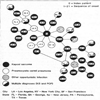Systems science methods in public health: dynamics, networks, and agents
- PMID: 22224885
- PMCID: PMC3644212
- DOI: 10.1146/annurev-publhealth-031210-101222
Systems science methods in public health: dynamics, networks, and agents
Abstract
Complex systems abound in public health. Complex systems are made up of heterogeneous elements that interact with one another, have emergent properties that are not explained by understanding the individual elements of the system, persist over time, and adapt to changing circumstances. Public health is starting to use results from systems science studies to shape practice and policy, for example in preparing for global pandemics. However, systems science study designs and analytic methods remain underutilized and are not widely featured in public health curricula or training. In this review we present an argument for the utility of systems science methods in public health, introduce three important systems science methods (system dynamics, network analysis, and agent-based modeling), and provide three case studies in which these methods have been used to answer important public health science questions in the areas of infectious disease, tobacco control, and obesity.
Figures




References
-
- National Collaborative on Childhood Obesity Research, Envision projects. http://nccororg/envision/indexhtml.
-
- Abdel-Hamid TK. Modeling the dynamics of human energy regulation and its implications for obesity treatment. System Dynamics Review. 2002;18:431–471.
-
- Ahmed E, Elgazzar A, Hegazi A. An overview of complex adaptive systems. ArXiv Nonlinear Sciences. 2005
-
- Alexander C, Piazza M, Mekos D, Valente T. Peers, schools, and adolescent cigarette smoking. Journal of Adolescent Health. 2001;29:22–30. - PubMed
-
- Aloise-Young PA, Graham JW, Hansen WB. Peer influence on smoking initiation during early adolescence: a comparison of group members and group outsiders. J Appl Psychol. 1994;79:281–287. - PubMed
Publication types
MeSH terms
Grants and funding
LinkOut - more resources
Full Text Sources
Medical

